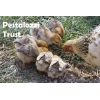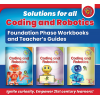Why a high-engagement school environment boosts learning
[This is a sponsored article and does not necessarily represent the views of SAHomeschoolers.Org]
As parents, we want our children to be enthusiastic about their learning and enjoy their day-to-day schooling experiences as much as possible. Overall, we aim for them to love their school. Many parents assume that this will happen automatically when we enrol them in a reputable brick-and-mortar school with good facilities, getting their education in the midst of a dynamic and committed school community. However, you can tick all those boxes about the school, and still find that your child is simply not engaged in their learning, or in their school social life.
Why is high engagement important for learning?
Educational Psychologist, Angela Hough says, “A child’s engagement is crucial to their learning. Children can learn facts, but without engaging and having an experience or learning to apply the knowledge - then those facts do not have purpose or meaning. Transformative learning is about the need to create meaning from the learning experience. Therefore, I would encourage learning that involves experiences, embodiment, sharing and communicating learning. Experiential learning is the process of learning through experience. Usually, the more involved a child is in their school and class, and the more that they ‘own’ their learning, then the happier they are and the more they learn.”
High engagement in a learning context is also impacted by a child’s engagement in the school’s social context. Hough says, “Peer relationships and teacher-learner relationships are also vital for a child’s sense of self-worth, belonging and wellbeing. Generally, the more a child feels valued for who they are, and the more they feel included, the happier they are, and the more they are able to contribute and experience. Therefore, encouraging positive relationship skills in schools is vital. This can be modelled, taught, encouraged and facilitated.”
There are many reasons why children may not be optimally engaged in their learning. In the classroom, teachers ‘teach to the middle’, inevitably leaving some behind and marooning others out front. Children become disengaged from their learning when they are frustrated with what is going on for them in the classroom. Difficulties in their school social relationships also impact on children’s engagement with their learning, as do challenges in their home lives. Physical and mental health impact on our abilities to be engaged in learning, as does neurodiversity such as ADHA, the Autism spectrum and learning difficulties.
Why high engagement cannot be left to chance
Principal of a high-engagement online school, Mark Anderson spent most of his teaching career in brick-and-mortar schools. Now as a co-founder of Koa Academy, he is clear about dispelling the myths when it comes to high-engagement learning environments. “Engagement does not happen automatically in any one specific type of school,” he says. “There are some physical schools which do a great job of having a highly engaging learning environment, while others don't. The same is true for online schools, home-schools, and every other type of school in between. Every child is also unique in how they go about engaging with others and their learning. What might be a great fit for one person might just not work as well for another. What this means for parents, is that when it comes to their school choices, they need to not only evaluate the school, its standing and its values; but do so in the context of what suits their unique child best.”
Anderson continues, “In my experience, we have to be really intentional about how we approach learning if we are to maintain high levels of engagement. This means that whether they are physical or online, schools need to have a clear goal to facilitate the high engagement of diverse learners; while parents have the intention to choose a high engagement learning environment for their children.”
Koa Academy addresses the need for high-engagement learning through its structure of Pods of 8 learners interacting every day with their teacher and each other. Anderson says,
“If we are going to maintain high engagement, both academically and socio-emotionally, in the online space then we need to be able to connect with each other. Everyone must be seen; and everyone must be heard. And that can only happen in small groups. Our Pods are small groups who see each other every school day and get to build meaningful relationships. It also means that the teacher sees every learner as an individual, and not just a face in a crowd, resulting in high levels of support and accountability. Learning paths can be individualised, such as we have customised timetables and enrichment paths that lean into each individual's interests. Every child's progress is easily tracked; strengths and challenges are addressed so that they don't get left behind or find themselves bored and frustrated.”
Learning through doing and learning through reflection
Learning is not simply listening to a teacher standing up in front and telling you the facts. You may remember those facts afterwards, but that’s just remembering. Learning can happen when you do something with the facts you retain, and when you reflect on those facts and your experience of doing something with them. That is your pathway to finding meaning in those facts, which is learning.
To find out more about Koa Academy, visit www.koacademy.com

Events
Legal & Research
Centres
Homeschool ABC
Support
Curriculums
Has no content to show!
































Comments